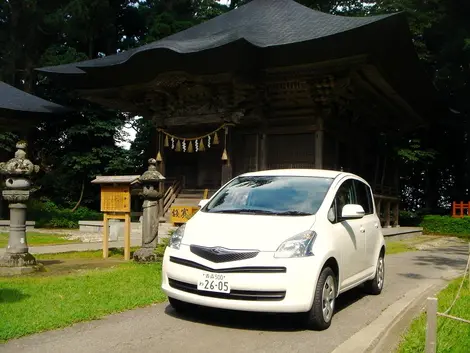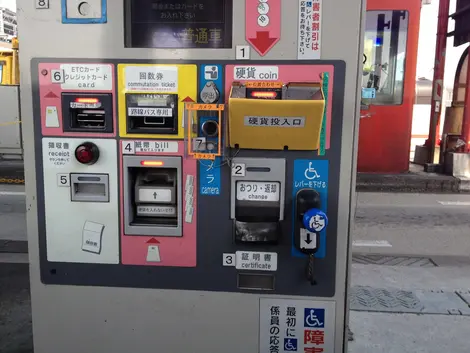Driving in Japan 車を運転する
10 things to know for zen driving in Japan
Put in drive and let the road guide you: driving in Japan is an experience not to be missed when you want to get off the beaten track... provided that you know where your wheels will take you!
1. Left!
Japan is one of the few countries where people drive on the left side of the street, with the steering wheel on the right side of the passenger seats. This is due to the first automobiles imported into the country being British, and the habit stuck. The difference may be confusing at first... but you'll quickly get into the groove.
2. Bilingual permits
Driving permits in Japan depend on where your originating country is. People from Belgium, France, Germany, Monaco, Slovenia, Switzerland, and Taiwan need to obtain a translation of their driver's license - a special translated permit. You will have to bring your driver's license to the Japan Automobile Federation, and get a valid certification. Japan Experience, can offer these services to you. People from most other countries can obtain an International Driving Permit in their home country to drive in Japan. Your original license and passport will be required when you drive.
3. It's automatic
Almost all Japanese vehicles have automatic transmissions, which makes driving easy and convenient. With only three speeds: P for park, D for drive, and N for neutral.
4. Excessively slow
Japan drives very slowly: 40 km/h is allowed in the city, 80 to 100 on the highways, 30 to 60 km/h elsewhere. While many drivers usually go 20km/h above these limits, beware of the police, as patrol cars are common on Japanese roads, and equipped with radars. So relax, drive safely and take in the scenery, you're on vacation!
5. Highways to islands
With roads in near perfect condition, well maintained and lit, frequent rest areas with (clean!) restrooms, and shops, and restaurants, Japanese highways are among the nicest and safest in the world. The downside: excessive toll gates and pricey tolls. There is barely a bridge that doesn't demand at least 100 yen per pass or 3500 yen ($31/27€) for the great Seto Ohashi bridge!. Ditto for highways: Approximately 2,000 yen ($18/16€) for a 3-hour drive between the two cities... There is a convenient prepaid card, ETC. However, ETC cards can be difficult to attain for foreign visitors as the application process can be confusing but don't worry, you can request an ETC card at the rental car office counter when you pick up your rental vehicle upon arrival.
6. For Navigation
The Japanese GPS offers a very useful feature: it allows you to enter a phone number instead of an address for navigation. Make sure to request an English GPS for ease of use - Japanese GPS can be challenging... We highly recommend GPS navigation for driving in Japan.
7. On a motorcycle
If your home license has a motorcycle endorsement printed on the license, you can drive any size motorcycle with an International Driving Permit in Japan. However, licenses of some countries have special rules, so be informed before you arrive.
8. Parking
In the opinion of many international drivers in Japan, the problem when visiting the country by car is parking. It is strictly forbidden to double park, park on the curb, or park in assigned parking spaces; and the fines are very severe. The only solution is to legally park or public/private parking lots, but to park in Japan is very expensive. A rate of 500 yen ($5/4€) for 30 minutes and 2,000 yen ($18/16€) for overnight is quite common and could run considerably higher in depending on the city and districts.
9. Rental car
Do not forget to bring your driver's license and its translation, consult the staff to show you the basics (many are keyless), and operate the GPS. If you are traveling with a toddler, be aware as the availability of baby seats can be limited so make sure to check and request ahead of time.
10. Time and Money
The excellent site NAVITIME gives drivers an estimate on the time it will take to drive between two locations, as well as the toll price (note that it is only available in Japanese, but its search engine accepts Roman characters and calculates price and distance).



















